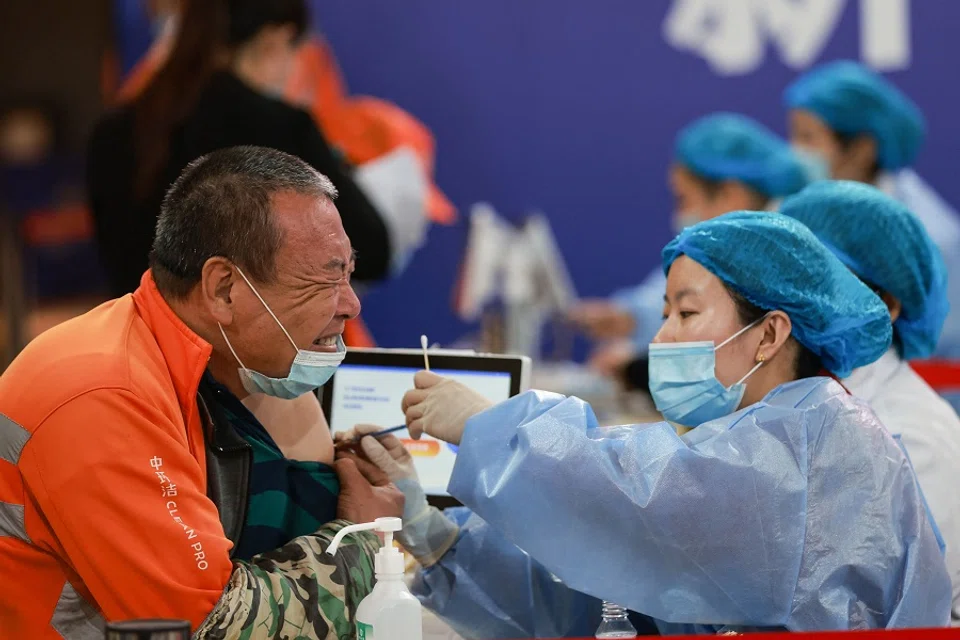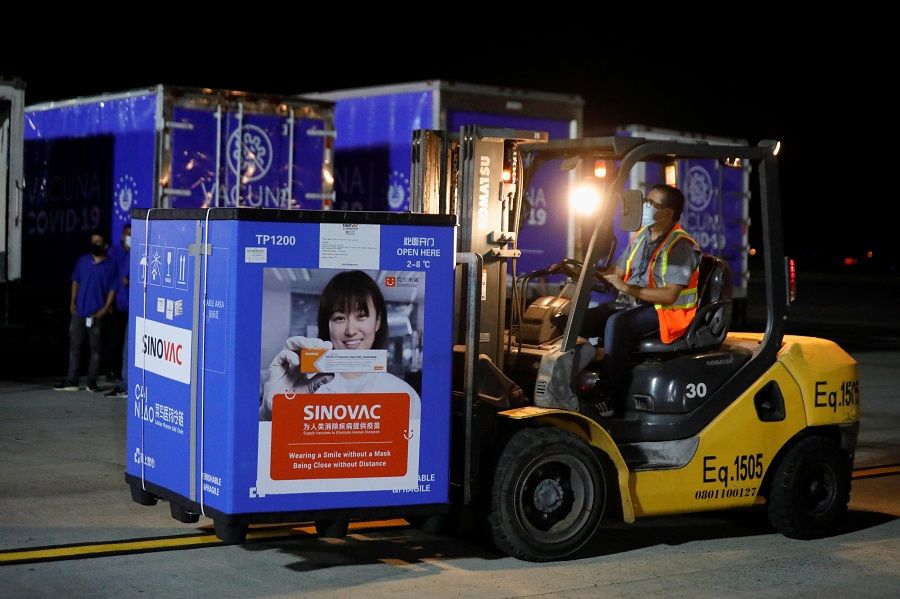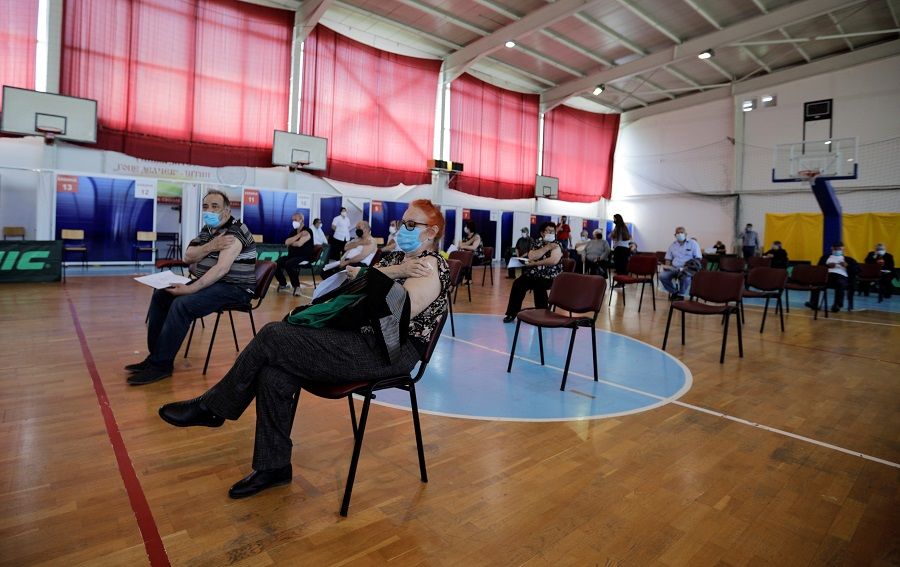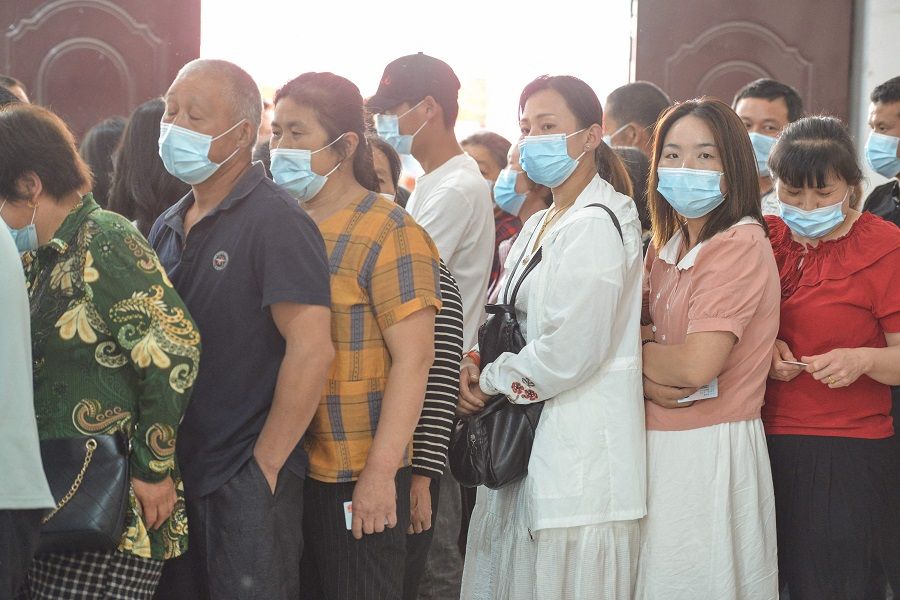How Chinese vaccines are paving the way for China's Health Silk Road

The Health Silk Road (HSR) is part of China's Belt and Road Initiative (BRI). The notion of health cooperation is not new. China's National Development and Reform Commission, Ministry of Foreign Affairs and Ministry of Commerce had jointly released the white paper "Vision and Actions on Jointly Building Silk Road Economic Belt and 21st Century Maritime Silk Road" in March 2015. At that time, the idea of Silk Road countries working together to treat and prevent infectious diseases was already discussed.
The difference is, since the Covid-19 pandemic first started in China, the country has been among the fastest to bring the situation under control, even if there continues to be sporadic outbreaks of locally-transmitted cases in different parts of the country. Unlike many places in the world where the Covid-19 pandemic is raging, China's tight grip on the situation has made its leaders more confident of promoting its HSR initiative. To this end, the main Chinese Covid-19 vaccines - Sinovac and Sinopharm - have important roles to play.
China-made vaccines at the forefront of China's Health Silk Road
On many occasions, Chinese President Xi Jinping indicated that approved Chinese Covid-19 vaccines are public goods in the global fight against the pandemic. Based on current figures, China is the biggest exporter of such vaccines in the world. Chinese vaccines have been sold or donated to some 91 countries, namely Asian, African and Latin American countries in the regions covered by the BRI. The advantage of Chinese vaccines is that they can be stored at normal refrigerator temperatures, making them more viable for developing countries facing logistical and storage constraints.
According to Chinese Covid-19 vaccine tracking data published by Bridge Consulting, a company headquartered in Beijing, as of mid-May, China has exported 214 million doses of vaccines, including 165 million doses of the Sinovac vaccine and 41.03 million doses of the Sinopharm vaccine. Additionally, China donated another 18.3 million doses of vaccine. The major importers of Chinese vaccines include Brazil (100 million doses ordered and 24.2 million doses delivered so far), Indonesia (140 million doses ordered and 67 million doses delivered so far), Turkey (100 million doses ordered and 20 million doses delivered so far), Chile (61.8 million doses ordered and 14.5 million doses delivered so far) and Pakistan (31.56 million doses ordered and 7.38 million doses delivered so far).
Clearly, utilising bilateral channels instead of COVAX is more beneficial to China having a say in where to export its vaccines and which vaccine the relevant countries choose.

Vaccine diplomacy through bilateral channels
Vaccines are the ultimate weapon to end the pandemic. The gravity of the situation means that vaccines have become strategic goods that are very much in demand around the world. On 7 May, the WHO made the Sinopharm vaccine the sixth Covid-19 vaccine to be approved for emergency usage, and the first vaccine not developed in the West to be approved by the organisation. (NB: The WHO has also just approved the Sinovac vaccine for emergency use.) This means that the WHO has endorsed the safety and efficacy of Chinese vaccines. WHO approval will raise the international credibility of Chinese Covid-19 vaccines and help countries gain confidence in purchasing them.
Chinese vaccine manufacturers are also looking into cooperating with their overseas partners to set up production facilities for vaccine packaging in countries such as Indonesia, the UAE, Egypt, Malaysia and Brazil. This will help to strengthen the value chains initiated by China, providing opportunities for it to deepen its cooperation with these countries in manufacturing.
Even though China talks about upholding multilateralism and enhancing international cooperation to combat the pandemic, it mainly exports vaccines directly through bilateral channels. The COVAX scheme put forth by the WHO aims to facilitate the fair distribution of Covid-19 vaccines globally. Even though China signed up for the scheme early on and has pledged to donate ten million Chinese vaccines through it, this number is far lower than the quantity it has directly exported and donated via bilateral channels. Clearly, utilising bilateral channels instead of COVAX is more beneficial to China having a say in where to export its vaccines and which vaccine the relevant countries choose. This allows China to realise its foreign policy goals and helps to promote its BRI overseas. Increasing the export of Chinese Covid-19 vaccines will enhance China's soft power and global influence.
Without the US, EU countries and India in the race at the moment, the only options left for developing countries are Chinese or Russian vaccines.

At present, over-publicity by Chinese state media is negating the positive image that China is building through its export of vaccines and other medical equipment to fight the pandemic.
Stepping in to fill a void
At the virtual Quadrilateral Security Dialogue (Quad) summit meeting held in March this year, leaders from the US, Japan, Australia and India jointly announced the Quad vaccine pact to provide at least one billion doses of Covid-19 vaccines to Asia Pacific countries by the end of 2022. This will utilise India's vaccine manufacturing capabilities, with raw materials and financial support provided to India. However, the pandemic taking a turn for the worse in India means that the plan is unlikely to get underway in the short term as India bans the export of vaccines for the remainder of 2021 to prioritise satisfying its domestic needs. The shortage of raw materials for vaccine production that India faces also means it is not a reliable major exporter of vaccines yet.
Without the US, EU countries and India in the race at the moment, the only options left for developing countries are Chinese or Russian vaccines. Regardless of the geopolitical and great power competition considerations behind China's global push, the export of WHO-endorsed Chinese vaccines amid global vaccine scarcity is something to be welcomed. This will help bring the pandemic under control in developing countries as soon as possible.
Even though the efficacy of Chinese vaccines is not as good as the Pfizer-BioNTech and Moderna vaccines, the likelihood of someone being infected by the SARS-CoV-2 virus after being inoculated is still halved. In countries ravaged by the pandemic, such an efficacy rate is not insignificant. Based on the data released by the respective health ministries of Brazil, Indonesia and Turkey etc., Chinese vaccines are safe, effective and help to lower the infection and mortality rates in developing countries, thereby preventing local healthcare systems and medical professionals from being overwhelmed.
Dangers of blowing one's own trumpet
The Chinese media is doing all it can to publicise the export of Chinese vaccines. Chinese ambassadors and senior officials based in the respective countries are often present at airports to welcome chartered flights carrying Chinese vaccines. Local officials expressing their thanks for these vaccines have become standard fare in Chinese media reports. Evidently, China does not want the world to forget that it supplied the vaccines. However, over-publicity could diminish the country's efforts to establish a positive image. It could also cause recipient countries to become wary and may even invite backlash from locals. At present, over-publicity by Chinese state media is negating the positive image that China is building through its export of vaccines and other medical equipment to fight the pandemic.

Vaccines are tools to end the pandemic and should not be politicised. It would be good news for the rest of the world if China and the US are able to join hands in vaccine distribution, just as they are doing in tackling climate change. In the second half of 2021, as the Covid-19 pandemic is brought under control in the US and EU countries, more vaccines will be made available for export. Together with vaccines from China, the pace of vaccine production and distribution, and vaccination will accelerate. At a G20 meeting earlier this year, Pfizer and Moderna pledged to supply three billion doses of Covid-19 vaccines in total (including through the COVAX scheme) to medium- and low-income countries at discounted rates by the end of 2022. The world eagerly awaits major vaccine manufacturers making good on their promises.
The SARS-CoV-2 virus is a cunning and silent enemy. The appearance of more infectious variants in some countries has resulted in new waves of cases. What is worrying is that if countries around the world, especially the big group of developing countries, are unable to obtain vaccines in time to raise national vaccination rates, new variants that current vaccines may not offer as much protection against may arise. This will accelerate the mutation of the variants and further propagation, resulting in wave after wave of Covid-19 cases that the world will struggle to be rid of. Until this pandemic is effectively under control globally, no country or individual can be totally safe.
WHO endorsement will encourage Chinese vaccine manufacturers to produce more vaccines for export. However, it is an onerous task for China to satisfy both domestic and foreign demand concurrently. As of mid-May, some 200 million individuals in China have received both doses of the vaccine. However, for a country with a population in excess of 1.4 billion, China is still a long way from inoculating more than 70% of its population in order to achieve herd immunity. For it to do so, China needs to administer 15 to 20 million doses of vaccine daily, but at this point in time, its vaccine manufacturers still do not have the production capacity to meet this demand, much less fulfil overseas orders. In fact, Chinese vaccine manufacturers have slowed down the export of their vaccines to prioritise satisfying domestic demand.
Related: Amid pandemic chaos, will China seize the chance to shape the global narrative? | Covid-19 pandemic and China's rising soft power in mainland Southeast Asia | Vaccine diplomacy: China and India push ahead to supply vaccines to developing countries | Is China's pandemic diplomacy working? | India's coronavirus crisis is the world's crisis. Politics needs to take a back seat.
